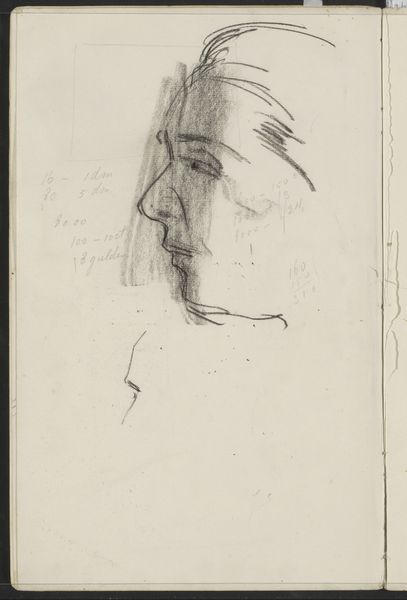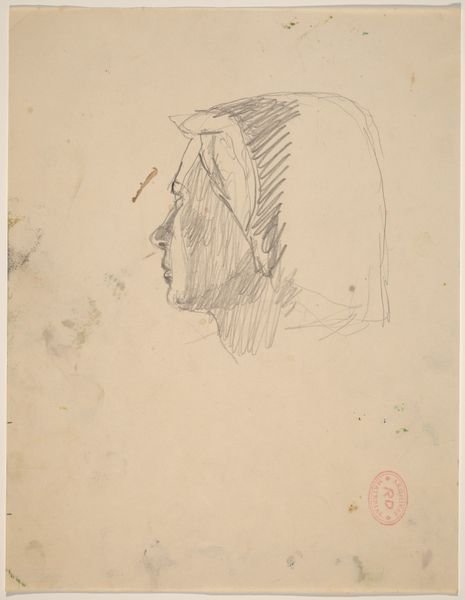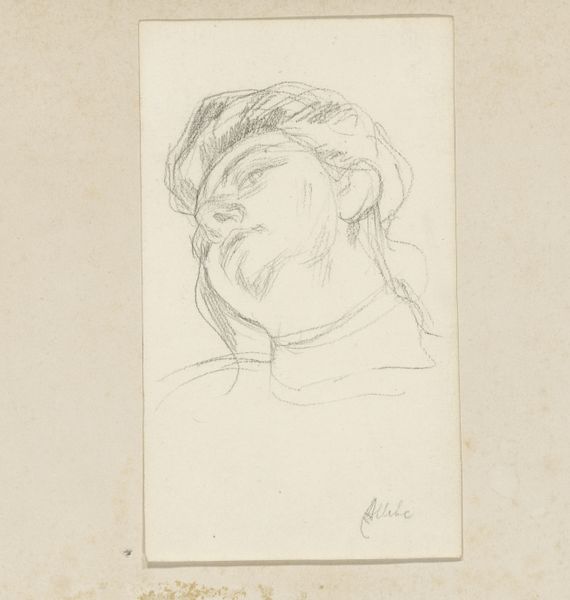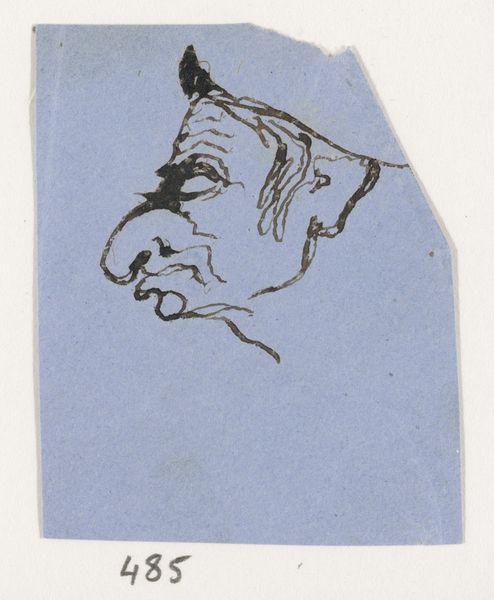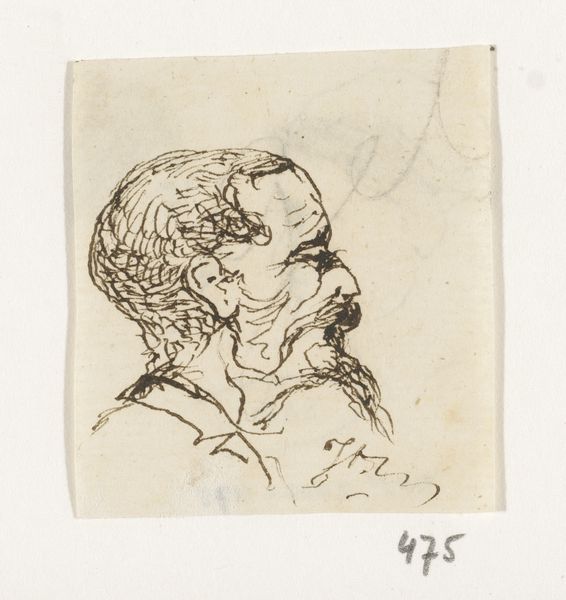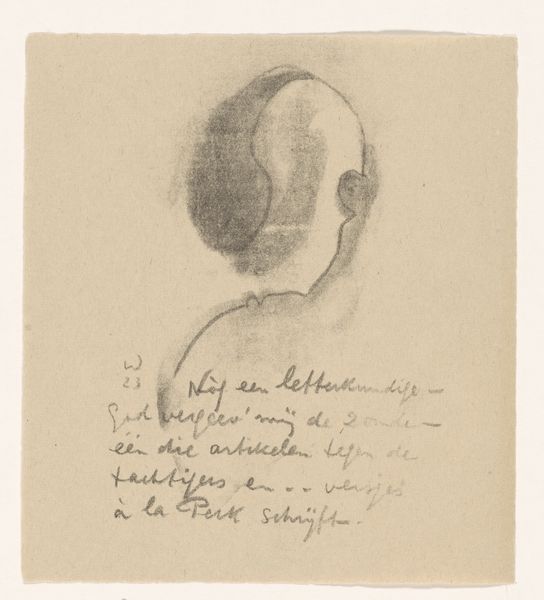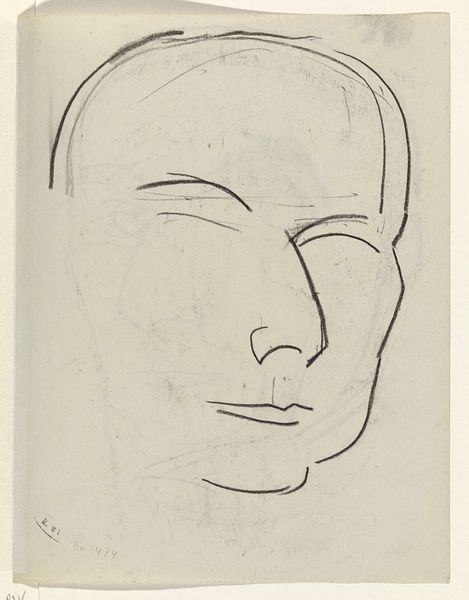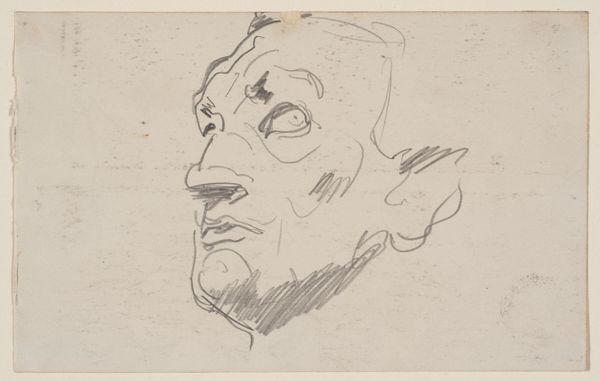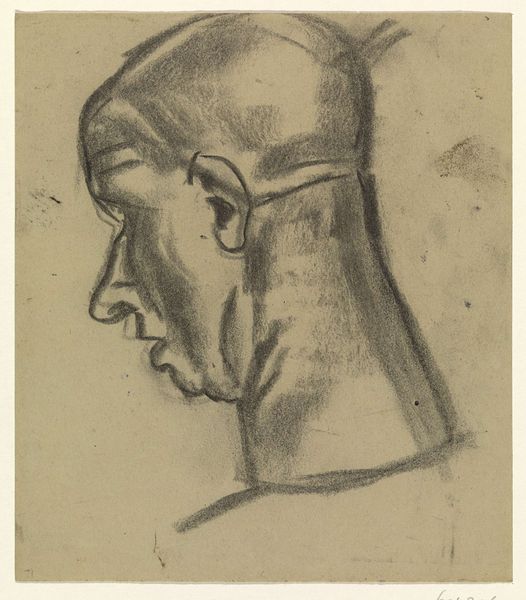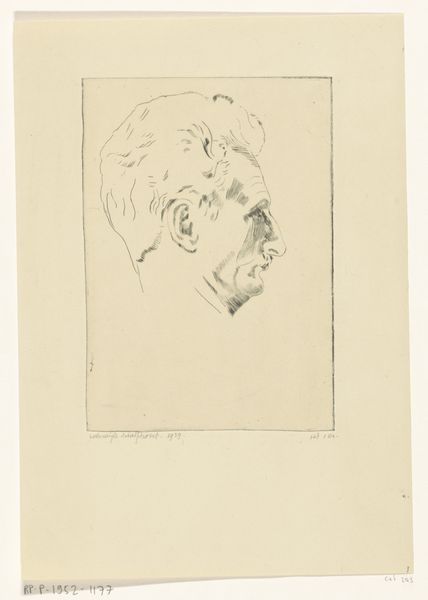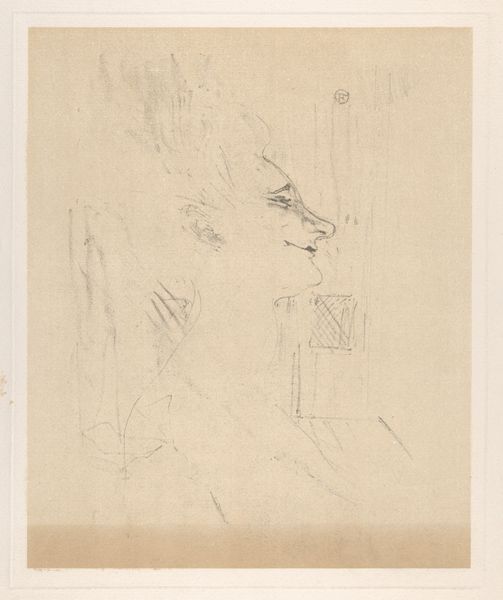
drawing, graphite
#
portrait
#
drawing
#
pencil sketch
#
expressionism
#
graphite
#
portrait drawing
#
modernism
Dimensions: height 146 mm, width 107 mm
Copyright: Rijks Museum: Open Domain
Curator: This is "De Franschman," a drawing made with graphite by Erich Wichmann in 1923. Editor: Immediately, I'm struck by its starkness. The shading is so economical, but conveys a sense of melancholy, a weight. What else can you tell me about the context here? Curator: Well, Wichmann was associated with Expressionism, which sought to depict subjective emotion rather than objective reality. Considering the title "The Frenchman" was rendered during the interwar years, one can wonder about issues of nationality and the anxieties of identity. Editor: You see the raw emotion; I see the rawness of the materials. That smudged graphite creates a very tactile, almost coarse surface. The medium itself mirrors the rough edges of the figure’s form. Look at how the shape is almost brutally reduced to basic contours! Curator: The incompleteness, I think, is key. It evokes a sense of vulnerability. Consider the absent details of the face, how they allow the viewer to project their own interpretations onto this figure. The artist seems interested in questions of "Frenchness" not as some fixed attribute but as something in constant negotiation and redefinition. Editor: I think there is also a real tension in the swift, assured marks that suggest volume without really committing. Wichmann knew exactly what he was doing with pressure and direction to shape that forehead, that suggestion of hair… he clearly knew his materials. There’s confidence there, belied by the seemingly simple appearance. Curator: Absolutely. I find myself pondering the symbolism behind this particular "Frenchman." Did Wichmann intend to capture something essential about French identity, or was he perhaps engaging with a stereotype? Editor: Or maybe pointing to a deconstruction of stereotypes in how the drawing is more of an echo of a figure rather than a complete definition? This dialogue has encouraged me to notice the balance the artist finds between intentionality and happenstance when considering not just who is depicted but HOW they're depicted. Curator: It is a powerful drawing, leaving you with so many different routes into historical and personal questions about identity and representation.
Comments
No comments
Be the first to comment and join the conversation on the ultimate creative platform.


